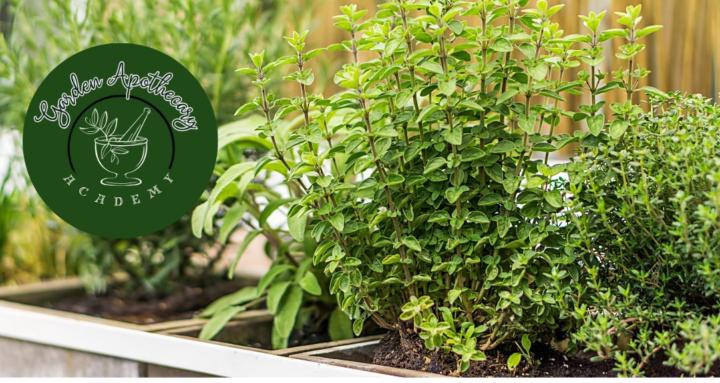Jun 14 • Gardening With Herbs
Fungal Diseases in the Garden
We have been getting rain- lots of rain. When it isn't raining it is still above 80% humidity.
Fungal diseases are a huge challenge when it is this kind of wet, humid, and warm.
Regardless of where you garden, fungal diseases can be a challenge. Here is an in depth look at common fungal problems and how to avoid the fungus getting a hold of your garden.
Fungal Diseases:
- Powdery Mildew: White or grayish powdery spots on leaves and stems, often caused by fungi like Erysiphe or Sphaerotheca. Thrives in warm, humid conditions but doesn’t require standing water.
- Downy Mildew: Yellow or white patches on leaf undersides, caused by pathogens like Peronospora or Plasmopara. Favors wet, warm weather and can spread rapidly.
- Leaf Spot Diseases: Small, dark spots with yellow halos on leaves, caused by fungi like Alternaria, Cercospora, or Septoria. Warm, moist conditions accelerate spread.
- Root Rot: Caused by fungi like Phytophthora or Rhizoctonia, leading to wilting, yellowing, and root decay. Overly wet soil and warm temperatures are key triggers.
- Anthracnose: Dark, sunken lesions on leaves, stems, or fruit, caused by Colletotrichum or Gloeosporium. Warm, rainy weather promotes its spread.
- Rust: Orange or yellow pustules on leaves, caused by fungi like Puccinia or Uromyces. Warm, humid conditions with prolonged leaf wetness encourage outbreaks.
- Botrytis Blight (Gray Mold): Fuzzy gray growth on flowers, fruits, or stems, caused by Botrytis cinerea. Thrives in cool to warm, wet environments.
These diseases often spread through water splashes, high humidity, or poor air circulation. Proper plant spacing, drainage, and avoiding overhead watering can help prevent them.
Keep Your Plants Happy: Battling Fungal Diseases the Organic Way
Warm, wet weather is like a party invite for fungal diseases that can wreck your garden. Powdery mildew, downy mildew, leaf spots, root rot, anthracnose, rust, and botrytis blight love these conditions. But don’t worry—you can fight back with organic treatments and smart prevention. Here’s the lowdown on keeping your plants healthy without harsh chemicals.
1. Powdery Mildew: The White Dust Disaster
What it looks like: White or gray powdery patches on leaves and stems. Organic fix: Mix 1 tablespoon of baking soda with a teaspoon of liquid soap in a gallon of water. Spray affected plants every few days. Neem oil works too—just follow the label. Prevent it: Space plants for good airflow, avoid overhead watering, and prune crowded branches. Keep your garden tidy to reduce humidity.
2. Downy Mildew: Sneaky Leaf Killer
What it looks like: Yellow or white patches, usually on leaf undersides. Organic fix: Apply copper-based fungicides (organic-approved) early in the disease cycle. Remove and destroy infected leaves—don’t compost them. Prevent it: Water in the morning so leaves dry out fast. Use drip irrigation to keep foliage dry. Choose resistant plant varieties if you can.
3. Leaf Spot Diseases: Polka Dot Problems
What it looks like: Dark spots with yellow halos on leaves. Organic fix: Spray with sulfur or copper-based fungicides at the first sign of spots. Remove and toss affected leaves to slow the spread. Prevent it: Rotate crops yearly, clean up dead leaves, and avoid splashing water on foliage. Good spacing helps leaves dry quicker.
4. Root Rot: The Silent Root Destroyer
What it looks like: Wilting, yellowing plants with mushy, brown roots. Organic fix: Tough to treat once it’s bad, but you can try drenching soil with beneficial microbes like Trichoderma or Bacillus subtilis to outcompete the fungi. Remove dead plants and infected soil. Prevent it: Improve drainage with raised beds or well-draining soil. Don’t overwater—let the top inch of soil dry out. Use pots with drainage holes.
5. Anthracnose: Sunken Spot Sorrow
What it looks like: Dark, sunken lesions on leaves, stems, or fruit. Organic fix: Apply neem oil or copper fungicides early. Remove infected plant parts and clean up fallen debris. Prevent it: Prune for better air circulation, water at the soil level, and avoid working in the garden when plants are wet to prevent spreading spores.
6. Rust: Orange Pustule Party
What it looks like: Orange or yellow pustules on leaves, often on the underside. Organic fix: Sulfur sprays can help if applied early. Remove and destroy affected leaves. Neem oil can suppress it too. Prevent it: Plant resistant varieties, keep leaves dry, and clean up garden debris in fall. Space plants to reduce humidity buildup.
7. Botrytis Blight (Gray Mold): Fuzzy Gray Nightmare
What it looks like: Fuzzy gray mold on flowers, fruits, or stems. Organic fix: Remove infected parts immediately and improve air circulation. Spray with Bacillus subtilis products or neem oil for control. Prevent it: Avoid overcrowding, prune dense growth, and water early in the day. Harvest fruits and flowers before they overripen.
5
1 comment

skool.com/gardenapothecary
An academy guaranteed to teach how to grow and use herbs medicinally for both you and your livestock.
Powered by



